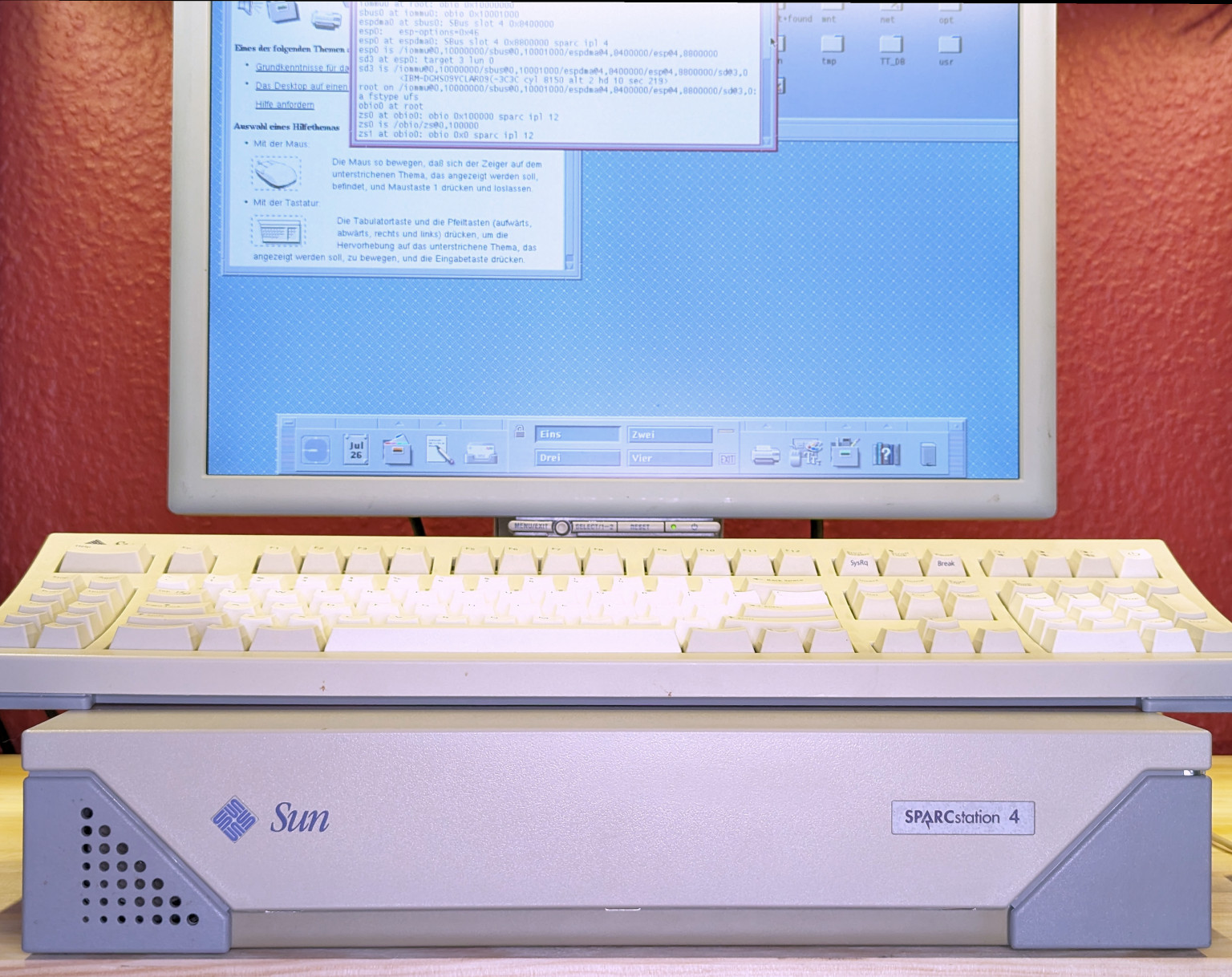SPARCstation 4
Gallery

Image of OSfOM.org Collection's SPARCstation 4.
Technical Specifications
| Model: | SPARCstation 4 |
|---|---|
| Codename: Platform: |
Perigee sun4m |
| Processor: Math Copro: |
microSPARC II |
| Clock Speed: | 70, 85, 110 MHz |
| RAM: | max. 160MB |
| Graphics: | |
| Operating System: | |
| Introduced: | February 1995 |
| Dealer price (net): |
Blogentry: SCSI? Voodoo!!!
The SPARCstation 4: An Entry Point to the SPARC World
The Sun Microsystems SPARCstation 4 served as an entry-level workstation in Sun's lineup. Positioned below the more powerful SPARCstation 5 and 20, the SS4 aimed to provide an affordable gateway into the SPARC/Solaris ecosystem for users who didn't require the highest levels of performance.
The SPARCstation 4 shared the same "pizza box" chassis design as the SPARCstation 5 and 20, maintaining the compact and recognizable form factor. It was powered by a soldered-on microSPARC-II processor, available in various speeds. While the microSPARC-II was a capable CPU, the SS4 typically featured a more basic configuration compared to the SS5, including fewer SBus slots and integrated graphics.
Often configured with an onboard 8-bit graphics framebuffer, the SPARCstation 4 was well-suited for general-purpose computing tasks, software development, and as a reliable desktop machine in environments where cost was a primary consideration. Its relative affordability made it a popular choice for educational institutions and businesses looking to deploy Unix workstations on a larger scale.
Despite being positioned as an entry-level system, the SPARCstation 4 still benefited from the stability and robustness of the Solaris operating system and the established SPARC architecture. It provided a solid platform for accessing network resources and running a wide range of Unix applications.
The SPARCstation 4 represents the later phase of Sun's 32-bit SPARC desktop line, offering a more budget-friendly option alongside the higher-performance models. It played a role in broadening the accessibility of the SPARC platform before the full transition to the 64-bit UltraSPARC era.